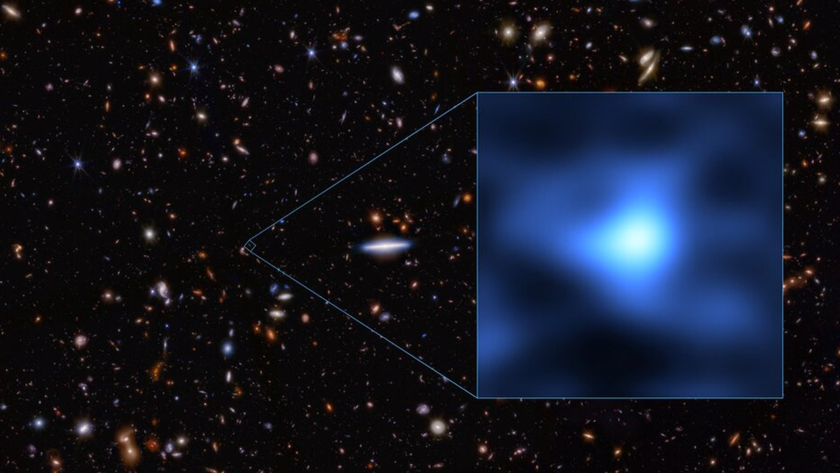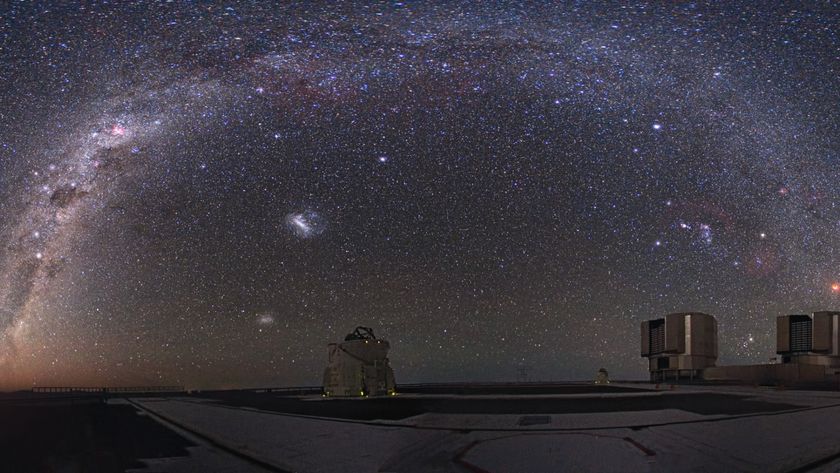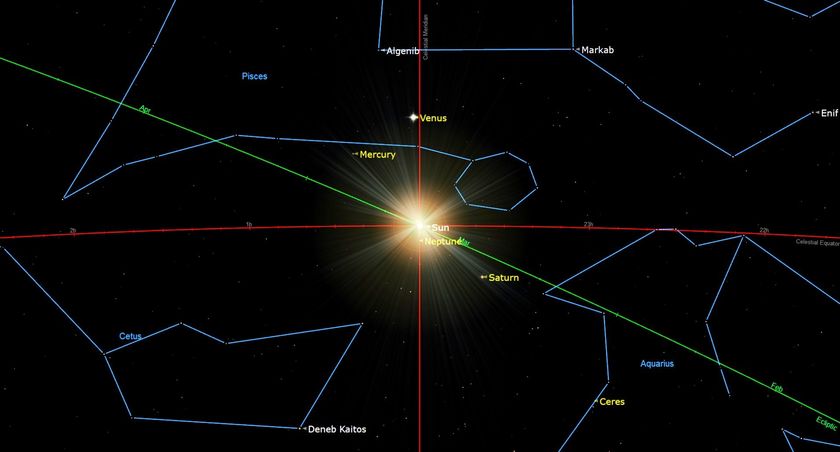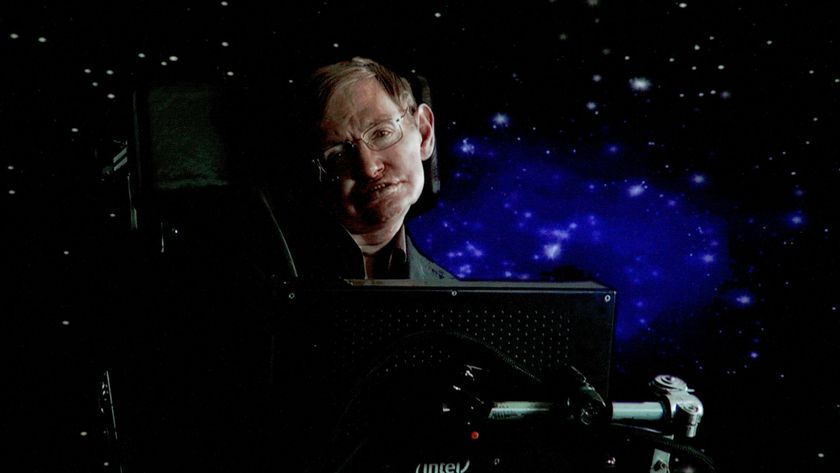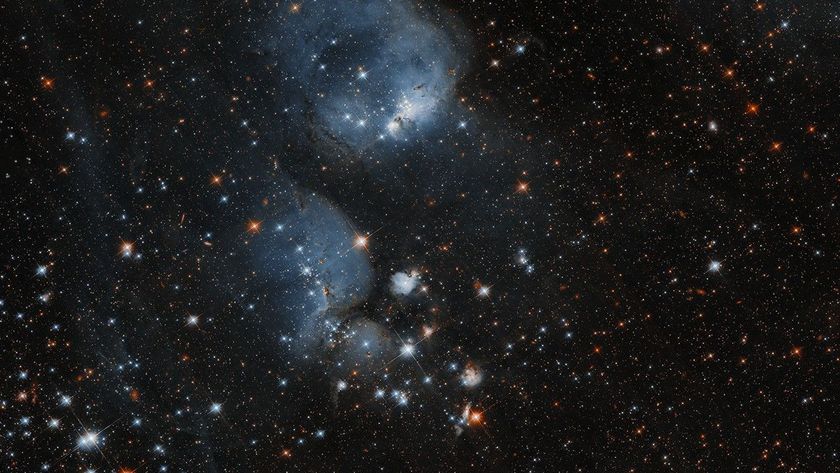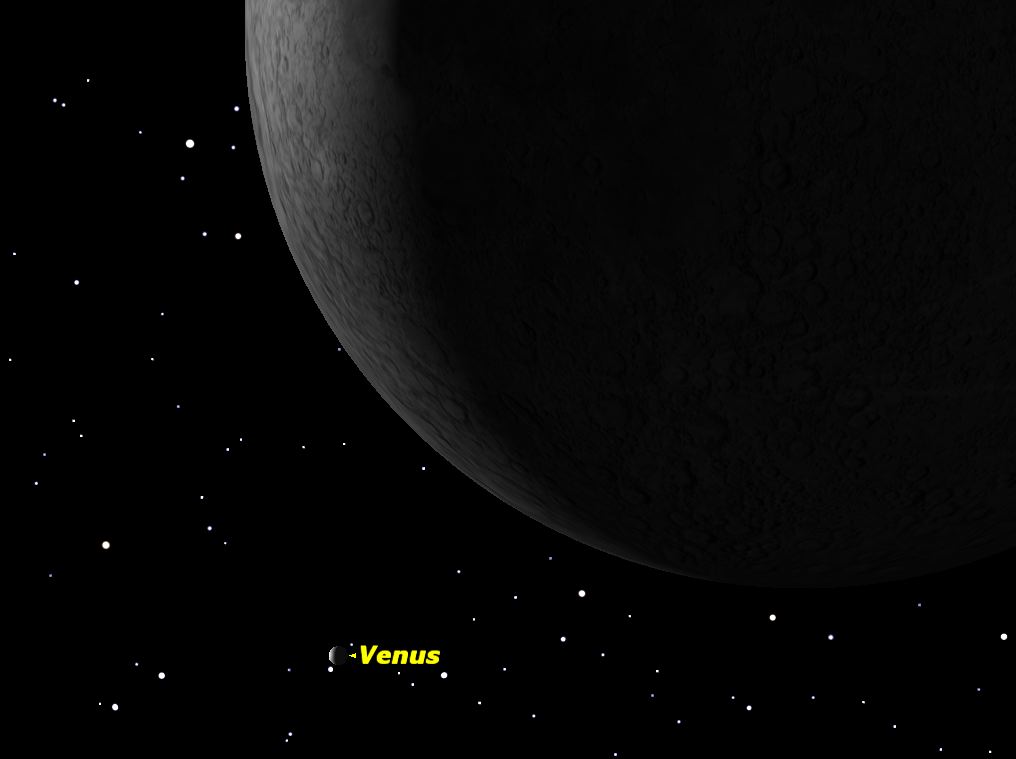
Venus has returned to the early morning sky, establishing itself as a dazzling morning lantern.
The planet is emerging into view from beyond the east-southeast horizon soon after 4:00 a.m. local standard time, rising in total darkness, about an hour before the first glimmer of dawn. Venus currently blazes at an awesome brightness of magnitude negative 4.6 and is near the greatest altitude it will achieve for viewers, around 40 degrees north latitude.
On Wednesday (Feb. 26) morning, early risers will get an eye-catching treat, weather permitting. A narrow (12 percent) illuminated waning crescent moon will sit just 3 degrees below and to the left of Venus. Both objects stand low over the east-southeast horizon. [Best Night Sky Events of February 2014: Stargazing Sky Maps]
The width of your fist held at arm’s length measures roughly 10-degrees in width. Therefore, the moon and Venus will be separated by just about one-third of a fist. You can also use the moon to see Venus through the light of the blue daytime sky. Just concentrate on that part of the sky above and to the right the moon after sunup and you should also be able to glimpse Venus as well.
To give you an idea of Venus' radiance, the planet currently gleams some 17 times brighter than Sirius, the brightest of all stars from Earth. In fact, it’s so brilliant that you might even try sighting it on very clear days with the naked eye after sunrise. If you can keep track of where it is through sunup, you should still be able to see it as a tiny white speck against the blue daytime sky.
In truth, the planet is not very high in the sky, but unfortunately this is about the best it will get during this usually low morning apparition. Venus looks like a "dazzling white star" that precedes the rising sun.
Venus will remain a fixture in the morning sky from now, right on through at least the middle of the summer.
Get the Space.com Newsletter
Breaking space news, the latest updates on rocket launches, skywatching events and more!
Now is also a fine time to examine the crescent of Venus in a telescope or even a pair of binoculars. A steady mounting for the binoculars — even just bracing them against the side of a tree — can make all the difference in the world.
There are, in fact, some individuals with such acute vision who claim that they can actually see the crescent of Venus without any optical aid. If you’d like to test your own vision on Venus, the best time to try it would be during bright twilight, say 15 to 30 minutes before sunrise. At that time, Venus will appear with far less glare against the background sky, giving your eyes a better opportunity to perceive its shape.
Whenever Venus appears as a crescent, I often relate a very amusing story told by the astronomy lecturer and author George Lovi (1939-1993). One night, while running a public viewing night at the Brooklyn College Observatory in New York, the telescope was pointed right at Venus, then displaying its delicate crescent shape. One student gazing through the telescope eyepiece stubbornly insisted he was really looking at the moon. When Mr. Lovi commented that the moon wasn’t even in the sky, the student replied, "So what? Doesn’t a telescope show you things you can’t see without it?"
Editor's note: If you have an amazing picture of the moon, Venus or any other night sky view that you'd like to share for a possible story or image gallery, send photos, comments and your name and location to managing editor Tariq Malik at spacephotos@space.com.
Joe Rao serves as an instructor and guest lecturer at New York's Hayden Planetarium. He writes about astronomy for Natural History magazine, the Farmer's Almanac and other publications, and he is also an on-camera meteorologist for News 12 Westchester, N.Y.Follow us @Spacedotcom, Facebook and Google+. Original article on Space.com.
Join our Space Forums to keep talking space on the latest missions, night sky and more! And if you have a news tip, correction or comment, let us know at: community@space.com.

Joe Rao is Space.com's skywatching columnist, as well as a veteran meteorologist and eclipse chaser who also serves as an instructor and guest lecturer at New York's Hayden Planetarium. He writes about astronomy for Natural History magazine, Sky & Telescope and other publications. Joe is an 8-time Emmy-nominated meteorologist who served the Putnam Valley region of New York for over 21 years. You can find him on Twitter and YouTube tracking lunar and solar eclipses, meteor showers and more. To find out Joe's latest project, visit him on Twitter.


